| Umělec 2004/1 >> Ass Rings | Просмотр всех номеров | ||||||||||||
|
|||||||||||||
Ass RingsUmělec 2004/101.01.2004 Anna Irmanovová a Jiří Ptáček | interview | en cs |
|||||||||||||
|
Blue Noses: four middle-aged Russian men. When you watch their videos you might think they are crack-brained, funny, embarrassing or brilliant. Their work is borderline parody, buffoonery, social criticism, but you never know exactly which way they lean. Putin, Bush, Harry Potter, Chechnyan terrorist, Oleg Kulig, feminism, Lenin and James Bond — whole committees of media icons take on the dimensions of a riveting spectacle, a performance Blue Noses comment on with their masculine fuddy-duddy self-irony. Two of the Blue Noses — Alexandr Šaburov (Saša) and Konstantin Skotnikov (Kosťa) — came to the Czech Republic to open their exhibition in Prague’s Gallery Display. The members of the “Siberian” art group (though they are not quite from Siberia), who Oleg Kulig introduced to the Venice Biennale and whose fame is growing among international curators, make their art as if they were working for MTV. At the end of the interview they both asked where they could buy books by the illustrator Jiří Šalamoun: “In Russia he is surely the best-known Czech artist. Many books were published which he illustrated and we think he’s great.” (redakce) Umělec: Where do the Blue Noses come from?
Sáša: Slava and Konstantin are from Novosibirsk. Kosťa: Saša is from Jekaterinburg. From the point of view of Moscow we are provincial artists: Novosibirsk, Sverdlovsk, Jekaterinburg, but don’t forget how huge that province is… Sáša: I am, for example, from Jekaterinburg, which is in the Ural Mountains. In a completely different direction from Siberia. But in Moscow I found out that, to the locals, I’m from Siberia, and I’m a Siberian artist. Kosťa: In Moscow they consider us as a Siberian group. In 1999 a project was realized in Novosibirsk. Twelve artists from different countries sat in groups of three or four in a bunker, and while trying to have some fun and enjoy themselves they started playing around, taking pictures, filming. The result was a video called Blue Noses, using the the fourteen performances that took place in the bunkers. Our friend Slava Mizin, who’s not in Prague because he fell while ice-skating and broke his leg, took the blue cap off the plastic bottle and put it on his nose and filmed himself. When the others saw him, they did the same, and then there were the fourteen performances in bunkers. Later it was screened in Moscow and since then all the artists from Siberia are called Blue Noses. Even when Sáša and Slava had a room reserved in a hotel at the triennale in Vilnius, they walked up to the reception desk and said: we have rooms booked under the name Šabirov – Mizin. There was no reservation, instead there was a reservation for Slava Blue Noses and Sáša Blue Noses, no surnames. We had another friend, Maxim Zonov, who was the fifth Blue Nose, but he died in a car crash. But that’s not important, we are four now. The most important ones are Sáša and Slava, because they were at the Venice Biennale and also because Sáša lives in Moscow and Slava goes to Moscow very often. U: But you work together don’t you? Sáša: We do projects in twos or threes, depending on what we make up and the possibilities. It’s a joy, not a must. First of all, we are friends, so it doesn’t matter, the important thing is to be together, to be friends. Kosťa: From time to time I go to Moscow. Then I sleep in Sáša’s bedroom and I feel good at his place. Sáša: Not in my bedroom, in the next room. He lives there, eats and drinks. And we talk. Kosťa: Sáša’s a very good host. I always look forward to the visit. We never fight and we don’t divide up the work, because that would be the beginning of the end. Sáša: Last year we did some short video sketches at the airport, Aeroport Art. Because we traveled a lot, we decided to do a show with touristic themes. We have some shots from Paris, Reims etc… U: It seems that Siberia could be good promotion for artists. People are interested in isolated artistic territories… Kosťa: No, it’s not like that. It makes us different from the Russian art. It’s not art from Moscow, the art of the capital. We differ not only thematically but also ethnographically. Our environment is specific, the life there at home looks different. In short, the “heroes” live in Siberia and people from the capital can’t imagine what this means. Russia’s big, many things happen at the same time, but we just aren’t a part of Russian art. We chose a different way. In Moscow they recently had a serious problem. Everyone was talking about the fact that in the American movie Armageddon there was a character of a Russian astronaut. He had a beard, was messy, drunk most of the time, drinking from the bottle, and running around the spaceship with a hammer. The Moscow culture agents wrote an open letter saying that this required someone to take a stand at the highest state level. That it’s not possible to depict a Russian astronaut like this, and that it has to be stopped, this depiction of a Russian man as a useless alcoholic. U: And? Was there any answer? Sáša: I don’t know, but it’s not important, maybe nothing happened at all or I forget. Russia’s a huge country where many things happen all the time and what was there a while ago, no longer exists. Kosťa: One lady looked at a picture in one exhibition where we act like homeless people and she said, “He’s not homeless, he has intelligent hands.” These things seem important to us, because they are even understandable to people in America. Pictures from the Soviet empire, short stories about people who lost families, work, their car. U: The immensity of the country establishes a type of creative freedom? Sáša: You choose what you want to do, what your subject will be, who to meet. And if you react to current events, to fresh information, you are more interesting to other people. As we took part in different international shows we found out that our handmade art, videos made in the kitchen, offers people an interesting theme and in an unusual way. And when we choose the language of mass culture, mass information — terrorism, Bin Ladin and so on — our audience gets larger. Kosťa: The changing times have given us these possibilities, a change in the atmosphere, in our country. Five years ago we couldn’t live like this. Five years ago I was sitting in Siberia, doing nothing. U: How do you explain your success? Sáša: Contemporary art in the Ural Mountains arose after the Second World War. It went through a time when all Soviet creations were considered bad and the art created in the West was good. Everyone was working in the pro-West context. Then they found out that there is no western creative paradise. The post-conceptualism of the 70s and 80s changed into a very limited statement, and it established an enclosed circle, as if artists were living in an ivory tower. So everyone only tried to make it understandable. Things which were not complicated and which were always approved by party functionaries. And now everything has changed. In Moscow there are many artists who don’t know each other; there are many galleries oriented in different directions, which don’t communicate together. They have no chance to communicate, and because of their orientation they have no reason to communicate. In Sverdlovsk, my home, when you do something, people who are interested contact you and they communicate with you. Once we did a project for the local Cultural House, and it addressed children and old people too. Our art doesn’t belong to a specific circle; it doesn’t share themes with someone else. Thematically, it’s populism. Just like MTV. A friend of mine has a six-month-old baby who learned how to change channels. But it managed to sit in one place for 40 minutes and watch MTV. Once I came there and put in our video – Blue Noses Against the Russian Mafia — and the child watched the video with the same interest as it had watched MTV. In Novosibirsk they play our videos in bars. Just like that, as clips for fun. U: How do the other local artists perceive you? Kosťa: In Novosibirsk the traditionalists are in power. They are blockheads and incommunicative. They accuse us of dilettantism. But my students at the State Institute of Architecture, where I lecture, are very sensitive towards contemporary art. The attitudes of other teachers are from the last century. U: Can you see any difference between the Russian and the non-Russian viewer? There’s a great deal of Russian politics and history in your art. Sáša: There’s no difference between the Russian and non-Russian viewer; we are used to a wide public. At the Venice Biannale there were viewers from Africa and they got our jokes with Putin’s head. Putin is not just a politician who presents himself in the media, he is also a character from real life. Our work can be understandable even to the guy in the street, because the focus of our humor is in universal information, valid for everyone and they appeal to everyone. There are no secret codes. Of course we refer to some specific facts, but that’s not the most important thing. Every person with a sense of humor should understand our films, except maybe for some sick or sad people. U: Are you able to earn some money from your films? Sáša: It’s not possible to earn money from art. Our art is no exception. Our projects are mostly supported by various altruistic associations. They also financially support the international exhibitions. And decide what is interesting and what is not. Kosťa: I lecture at the State Art Academy in Novosibirsk. I lecture in painting, drawing and sculpture for the students of architecture. I myself studied architecture. Slava Mizin is an architect as well. Most of the artists in Russia have a job which earns them some money, for example they work in museums. Before we never had a lecture on contemporary art at our institute, just contemporary architecture, and that’s what I’m doing now, lecturing on contemporary art. It’s nice to have such a job. Regarding our work, we are professional artists, but in the financial field we are amateurs. An amateur club. We got used to it. It is a kind of simulation. An artist, if he makes something, in the eyes of others he’s not working and they think he should get a proper job. People aren’t used to understanding an artist as a working person. U: In one of your videos you worked together with Oleg Kulik. You make fun of him as the greedy Moscow Master. What is your real opinion of him? Kosťa: We feel like colleagues. We’ve seen him pretending to be a dog and barking at people. He’s charismatic, talented, full of ideas. He’s very successful. It was because of him that we could show the video Absolut Art. Oleg was looking for some young, fresh inspiration and he couldn’t find anything, and then he saw Blue Noses and approached us. He’s a great companion. He likes good food and drink. U: Did you get to know Veronika Bromová at the Abosolut Vodka action in Venice? Sáša: No, we knew Veronika before. She participated in one conference in the Ural Mountains where the Russian studies scholar Tomáš Glanc was also invited. At that time I got a grant to treat my tooth, and so I remember Tomáš Glanc. [laughter] Kosťa doesn’t remember Tomáš Glanc, but he remembers Veronika Bromová. Kosťa: Yes, I fell in love with Veronika Bromová. Yesterday we met up with her and Kateřina Vincourová, who I knew in Stockholm in 1999 and throughout the evening I found myself thinking about both of them. U: Why did you choose Display to show this cross-section of what the Blue Noses have done? Kosťa: Because it’s a retrospective. Last year we worked hard and filmed a lot of material. This year we haven’t done anything yet. A month ago I visited Sáša in Moscow for ten days. But at that time he had some love story, so we didn’t do anything at all, and I had troubles at work so I set off for Moscow. U: How do you relax? Sáša: That depends. When I came to Moscow in 1999, I went out a lot, to bars and so on. Two years ago I stayed at home, lying on the couch and watching TV. I didn’t go anywhere. Kosťa: We know how to surf the Barents Sea on snowboards. But it’s important to eat and drink well. And when I travel I rest. Prague, Vilnius, Atlantic Ocean, snowboards — travelling is my personal psychotherapy. U: The ways of the Mafia is another of your big themes. What does the Russian Mafia think of your art? Sáša: It would be great if the Russian Mafia bought some of our works for a lot of money. U: What are you going to do when you get a state award. Sáša: Things like these aren’t important. They don’t mean anything. In our dreams we can think about being appreciated and awarded and of having a safe place in the sun. But all this depends on things like the Russian Mafia, for example, which controls many aspects of life in our society. U: What is your relationship towards the Orthodox Church in Russia? Sáša: Under the Soviet regime religions were set aside and they didn’t draw as much attention as they do now. But it’s important to understand that Siberia is not as religious as Moscow. It is so inappropriate when you see the Russian president lighting candles in the church. Imagine, after we’ve read Darwin…! People don’t know what good or bad is today. After the fall of communism they lost their ideology and it was necessary to substitute it with something else. To keep people in their grasp. And so the Orthodox Church today has the power of the Mafia. Kosťa: Just now in February they took down my exhibition in the House of Culture in Novosibirsk. They said that there could be a negative reaction from the Orthodox Church. That the exhibition looks like a critique of Orthodox spirituality. But in Moscow it’s even worse — there’s a bigger concentration of churchgoers. I think that you know the case of Avděj Ter-Oganjan. He lives in the Czech Republic now… They have reconstructed a huge temple there… It’s very harsh. U: You want to say that there’s censorship in Russia? Kosťa: It’s not censorship in the correct meaning of the word. It’s just the individual powers of some complex system, institutions which say: “and now the Orthodox Church will protest.” The conservatives in Novosibirsk who accept only traditional art wrote a letter to the mayor and the people in the House of Culture got scared that they would have problems with funding so they took my exhibition down. The Siberian cultural reality, folk production, they play the accordion, listen to Ala Pugačevová and sing chastushka. Young artists are radically against this, we aren’t. OK, let them play and sing… but they don’t tolerate us. We made these rings from cardboard and pasted them to our buttocks and filmed it. And people wrote to the governor that it’s propaganda for homosexuality and that he has to put a stop to it it. And he will, because he wants to keep the peace. I don’t understand how having cardboard rings on our butts could be propaganda for homosexuality.
01.01.2004
Рекомендуемые статьи
|
|||||||||||||
|
04.02.2020 10:17
Letošní 50. ročník Art Basel přilákal celkem 93 000 návštěvníků a sběratelů z 80 zemí světa. 290 prémiových galerií představilo umělecká díla od počátku 20. století až po současnost. Hlavní sektor přehlídky, tradičně v prvním patře výstavního prostoru, představil 232 předních galerií z celého světa nabízející umění nejvyšší kvality. Veletrh ukázal vzestupný trend prodeje prostřednictvím galerií jak soukromým sbírkám, tak i institucím. Kromě hlavního veletrhu stály za návštěvu i ty přidružené: Volta, Liste a Photo Basel, k tomu doprovodné programy a výstavy v místních institucích, které kvalitou daleko přesahují hranice města tj. Kunsthalle Basel, Kunstmuseum, Tinguely muzeum nebo Fondation Beyeler.
|







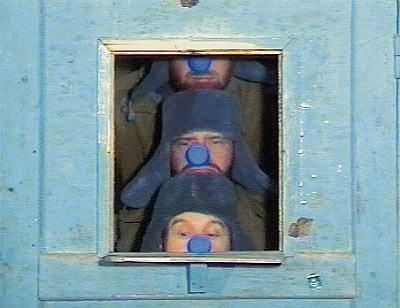




















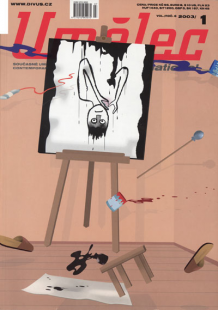




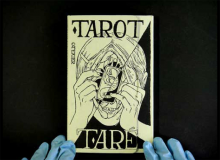
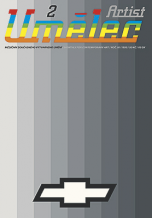

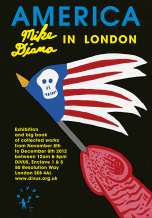


 New book by I.M.Jirous in English at our online bookshop.
New book by I.M.Jirous in English at our online bookshop.
Комментарии
Статья не была прокомментированаДобавить новый комментарий